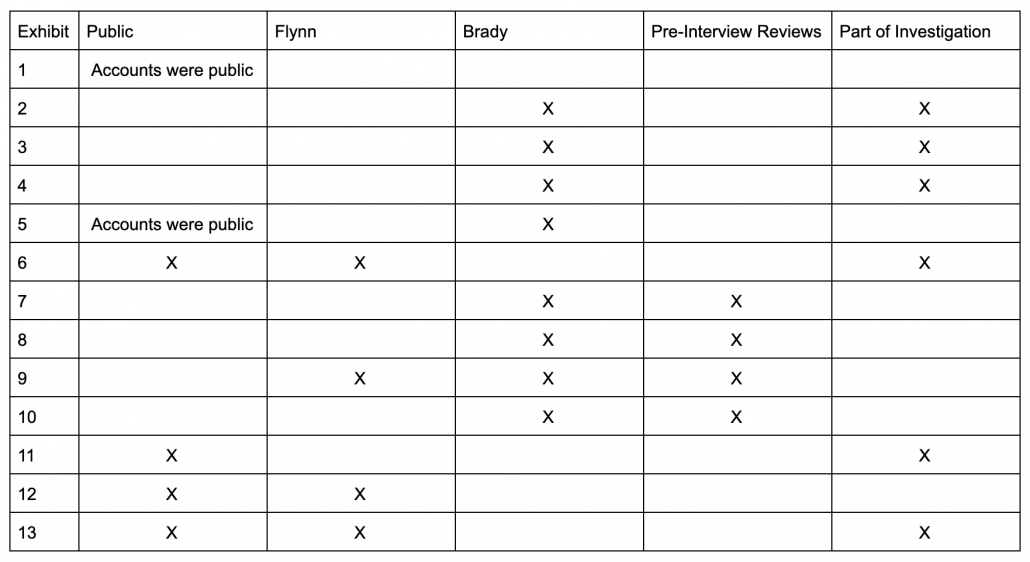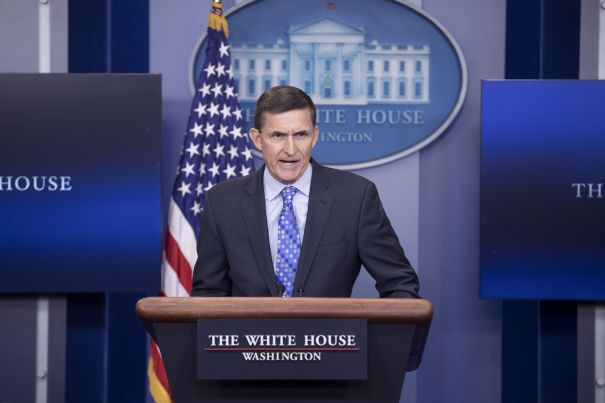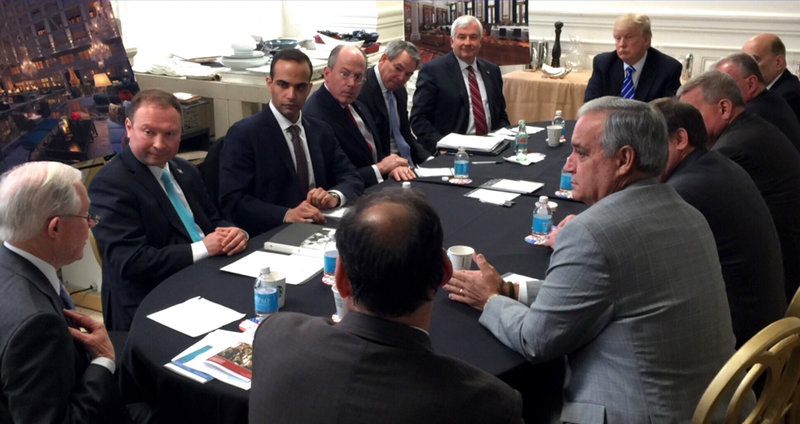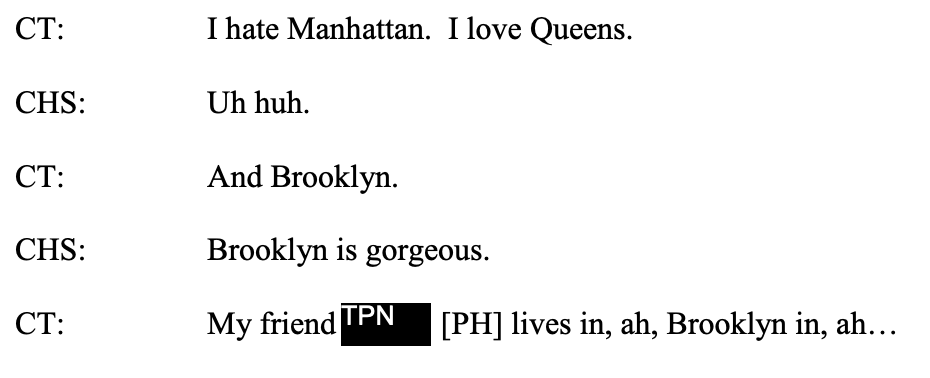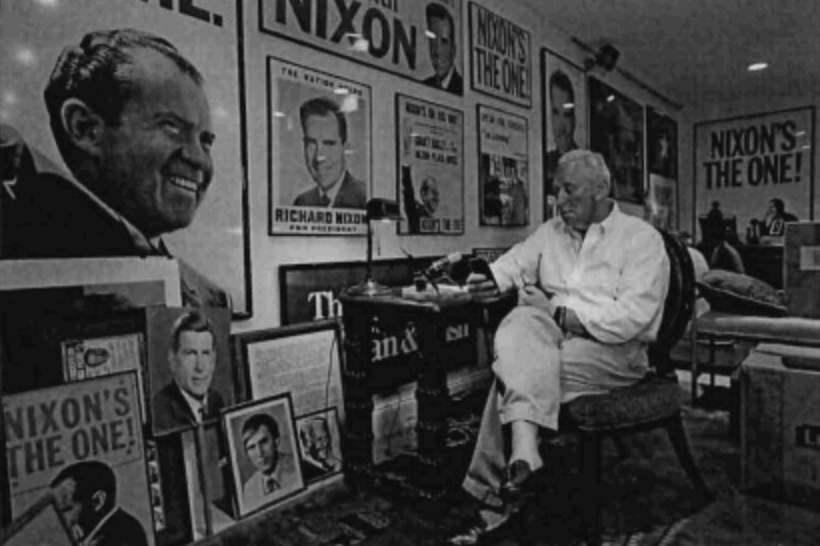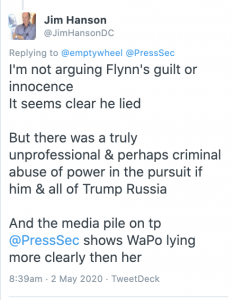Judge Sullivan Has Already Rejected Most of Timothy Shea’s DOJ Flynn Pardon
In this post, I laid out how Acting DC US Attorney Timothy Shea claimed DOJ had “newly” acquired a bunch of information which led it to decide to ask Judge Emmet Sullivan to dismiss Mike Flynn’s prosecution.
Except none of the information was new.
The table below shows what is known about the documents Shea relied on yesterday, using the exhibit numbers from DOJ’s filing. Some were already public, another had been provided to Flynn, others were probably reviewed in investigations of the circumstances of Flynn’s interviews (as explained below). It’s hard to square Shea’s claim that some of this was newly declassified, as most things that had once been classified had already been declassified publicly (and DOJ reclassified two lines from an Andrew McCabe memo, while declassifying a few more lines of it). Other documents were generated as part of this investigation, and so could in no way be deemed “new” to the prosecutors who generated them (nor to Rod Rosenstein, who approved Flynn’s prosecution). As for the rest, Flynn asked for them last year as part of a Brady motion, and Sullivan rejected those requests in a meticulous 92-page opinion written in December.
Effectively, then, Bill Barr appointed Jeffrey Jensen to “review” Flynn’s prosecution for one purpose: to override Judge Sullivan’s Brady decision last December.
As I keep repeating, it’s never a good idea to predict what Judge Sullivan will do. I expect he’ll review these exhibits closely and see whether they change his mind about DOJ’s representations that none of them were helpful to Flynn. He might find the Bill Priestap notes troubling, but that document is not only deliberative (and therefore always excluded from Brady), but it states clearly that, “our goal is to determine if Mike Flynn is going to tell the truth about his relationship w/Russians,” a goal Sullivan has already deemed proper.
It’s possible, however, that Sullivan will view these documents and recognize that they don’t change the order he already issued, finding Flynn’s lies material and his prior guilty pleas still valid. If he does, he may well be peeved that DOJ tried to overturn a judge’s ruling by bureaucratic fiat.
DOJ may not have had two FBI documents
There are just two documents that DOJ probably wouldn’t have already had or reviewed. One is a draft memo closing the investigation into Flynn. The other is the Jim Comey transcript briefing the House Intelligence Committee on the Flynn investigation. Because the former was an FBI document, it’s not clear it would ever have made it into DOJ files. And it dates to earlier than the Brady requests Flynn made last year. That said, the fact that FBI had decided to close out the investigation up until they discovered Flynn’s calls with Sergey Kislyak was public before Flynn pled guilty a second time, when he swore that he had no concerns about Brady. And the circumstances surrounding the non-closure of this investigation made it into 302s otherwise accounted for.
As to the Comey transcript, DOJ said it did not have an unredacted copy of this last year. But like the draft closure, the facts in it have long been public, most notably in the House Intelligence Report on their Russian investigation, which was done nine months before Flynn pled guilty again.
DOJ reviewed Page-Strzok texts and the meetings before and after Flynn’s interview
One of the things DOJ submitted as “new” information yesterday were Page-Strzok texts. We already know that DOJ IG reviewed every one of those, some of them multiple times, particularly if they pertained to Flynn or other Trump people.
As noted, documents pertaining to meetings before and after Flynn’s interview would likely have been reviewed by DOJ already, because DOJ repeatedly chased down allegations made about those meetings. Flynn already got an FBI Inspection Division 302 reflecting Peter Strzok being interviewed about some of these allegations and a Mueller 302 reflecting Lisa Page being interviewed about other ones. The government repeatedly looked into allegations that Andrew McCabe said, “First we fuck Flynn, then we fuck Trump,” at the meeting preparing for the Flynn interview (which is presumably what these notes record).
The defendant’s complaints and accusations are even more incredible considering the extensive efforts the government has made to respond to numerous defense counsel requests, including to some of the very requests repeated in the defendant’s motion. For instance, the defendant alleges that former FBI Deputy Director Andrew McCabe said, “‘First we f**k Flynn, then we f**k Trump,’ or words to that effect;” and that Deputy Director McCabe pressured the agents to change the January 24 interview report. See Mot. to Compel at 4, 6 (Request ##2, 22). Defense counsel first raised these allegations to the government on January 29, 2018, sourcing it to an email from a news reporter. Not only did the government inform defense counsel that it had no information indicating that the allegations were true, it conducted additional due diligence about this serious allegation. On February 2, 2018, the government disclosed to the defendant and his counsel that its due diligence confirmed that the allegations were false, and referenced its interview of the second interviewing agent, 4 who completely denied the allegations. Furthermore, on March 13, 2018, the government provided the defendant with a sworn statement from DAD Strzok, who also denied the allegations.
Nevertheless, on July 17, 2018, the defense revived the same allegations. This time, the defense claimed that the source was a staff member of the House Permanent Select Committee on Intelligence (“HPSCI”). The HPSCI staff member allegedly told the defendant that the second interviewing agent had told the staff member that after a debrief from the interviewing agents, Deputy Director McCabe said, “F**k Flynn.” Once again, the government reviewed information and conducted interviews, and once again confirmed that the allegations were completely false. And after defendant and his counsel raised the accusation for a third time, on October 15, 2018, the government responded by producing interview reports that directly contradicted the false allegations. Despite possessing all of this information, defense counsel has again resurrected the false allegations, now for a fourth time.
In fact, Bill Priestap’s notes of what appear to be the McCabe meeting show no such claim. He does reflect them talking about how to deal with Flynn’s comments. But they record no reference to Trump.
Emmet Sullivan reviewed two of these 302s
Of particular note, Emmet Sullivan already reviewed several of these documents. In his Brady opinion from December, he described an in camera review he did in December 2018, in part to make sure the summaries of the Mary McCord and Sally Yates 302s was adequate disclosure.
As to Requests a through f and Request i, the government has provided Mr. Flynn with: (a) “information from interviews with [Mr.] McCabe that could reasonably be construed as favorable and material to sentencing”; (b) “information that could reasonably be construed as favorable and material to sentencing about such pre-interview discussions, including the language quoted in the request”; (c) “information about such post-interview debriefings that could reasonably be construed as favorable and material to sentencing”; (d) “information from former [Principal] Associate Deputy Attorney General Matthew Axelrod’s interview report that could reasonably be construed as favorable and material to sentencing”; (e) “information from [Ms.] McCord’s interview report that could reasonably be construed as favorable and material to sentencing, including the information quoted in the request”; (f) “information from [Ms.] Yates’ interview report that could reasonably be construed as favorable and material to sentencing, including the information quoted in the request”;
[snip]
Based on an in camera review of the government’s sealed submissions to the Court on December 14, 2018, see, e.g., Min. Order of Dec. 17, 2018; Gov’t’s Opp’n, ECF No. 122 at 16 n.8; Gov’t’s Notice of Disc. Correspondence, ECF No. 123 at 3, the Court agrees with the government that the requested information in Requests a through f and Request i has already been provided to Mr. Flynn in the form of appropriate summaries, see Gov’t’s App. A, ECF No. 122-1 at 6-7.
Given that Sullivan accounted for these documents, his materiality analysis is unlikely to change
As noted, Sullivan might decide that some of these documents should have been provided under Brady, in spite of his ruling on them. But unless he does, it’s unlikely his view on the materiality of Flynn’s lies will change, contrary to the footnote in Shea’s memo yesterday.
7 The Government appreciates that the Court previously deemed Mr. Flynn’s statements sufficiently “material” to the investigation. United States v. Flynn, 411 F. Supp. 3d 15, 41-42 (D.D.C. 2019). It did so, however, based on the Government’s prior understanding of the nature of the investigation, before new disclosures crystallized the lack of a legitimate investigative basis for the interview of Mr. Flynn, and in the context of a decision on multiple defense Brady motions independent of the Government’s assessment of its burden of proof beyond a reasonable doubt.
That’s because Sullivan knew when he wrote his opinion that FBI had almost closed the investigation of Flynn but reopened it after learning of Flynn’s comments to Kislyak. There’s nothing about this discussion that would change given what was disclosed yesterday.
Mr. Flynn argues that his false statements to the FBI were not “material” for two reasons. See Def.’s Reply, ECF No. 133 at 31-32. First, Mr. Flynn contends that his conversations with the Russian Ambassador were unrelated to the FBI’s investigation into Russia’s efforts to interfere in the 2016 presidential election because the interviewing FBI agents did not ask him a single question about election interference or any coordination between Russia and the Trump campaign. See id. Next, Mr. Flynn argues that the FBI had recordings and transcripts of his conversations with the Russian Ambassador, arguing that the FBI “knew exactly what was said” and “nothing impeded [the FBI’s] purported investigation.” Def.’s Sur-Surreply, ECF No. 135 at 12. The government responds that Mr. Flynn’s false statements were “absolutely material” because his false statements “went to the heart” of the FBI’s “counterintelligence investigation into whether individuals associated with the campaign of then candidate Donald J. Trump were coordinating with the Russian government in its activities to interfere with the 2016 presidential election.” Gov’t’s Surreply, ECF No. 132 at 10.
[snip]
Mr. Flynn has a fundamental misunderstanding of the law of materiality under 18 U.S.C. § 1001(a)(2), which requires a false statement to be “material.” United States v. Stone, 394 F. Supp. 3d 1, 12 (D.D.C. 2019) (materiality is a necessary element to establish a violation of the false statements statute). The Supreme Court has instructed that “[t]he statement must have ‘a natural tendency to influence, or [be] capable of influencing, the decision of the decision-making body to which it was addressed.’” United States v. Gaudin, 515 U.S. 506, 509 (1995) (quoting Kungys v. United States, 485 U.S. 759, 770 (1988)); accord United States v. Diggs, 613 F.2d 988, 999 (D.C. Cir. 1979) (“Proof of actual reliance on the statement is not required; the Government need only make a reasonable showing of its potential effects.”). But “a statement need not actually influence an agency in order to be material.” Moore, 612 F.3d at 701.
As a matter of law, the government need not prove that Mr. Flynn’s false statements impeded the FBI’s investigation in order to establish the materiality element. See id. at 702 (holding that defendant’s false statement “was capable of affecting the Postal Service’s general function of tracking packages and identifying the recipients of packages entrusted to it” and defendant’s false information “could have impeded the ability of the Postal Service to investigate the trafficking of narcotics through the mails”). And Mr. Flynn’s multiple false statements were material regardless of the interviewing FBI agents’ knowledge of any recordings and transcripts of his conversations with the Russian Ambassador—the existence or nonexistence of which have neither been confirmed nor denied by the government, see Gov’t’s App. A, ECF No. 122-1 at 5—and whether the FBI had knowledge of Mr. Flynn’s exact words during those conversations. See United States v. Safavian, 649 F.3d 688, 691 (D.C. Cir. 2011) (rejecting defendant’s argument that his false statements were not material where the interviewing FBI agent “knew, based upon his knowledge of the case file, that the incriminating statements were false when [the defendant] uttered them”).
Mr. Flynn’s other argument—that his false statements about his conversations with the Russian Ambassador were not related to the investigation into Russia’s efforts to interfere in the election—is unavailing. “Application of § 1001 does not require judges to function as amateur sleuths, inquiring whether information specifically requested and unquestionably relevant to the department’s or agency’s charge would really be enough to alert a reasonably clever investigator that wrongdoing was afoot.” United States v. Hansen, 772 F.2d 940, 950 (D.C. Cir. 1985). Here, Mr. Flynn’s false statements to the FBI about his conversations with the Russian Ambassador were relevant to the FBI’s inquiry. See SOF at 1 ¶ 1. It is undisputed that the FBI had already opened the investigation to, among other things, investigate the “nature of any links between individuals associated with the [Trump] Campaign and Russia” at the time of Mr. Flynn’s January 24, 2017 interview. Id. A “lie distorting an investigation already in progress” could impact the FBI’s decision to act and follow leads. Hansen, 772 F.2d at 949; accord United States v. Stadd, 636 F.3d 630, 639 (D.C. Cir. 2011) (defendant’s false statements were material because the truth “would have raised red flags that would have led [the agency’s ethics advisor] to inquire further”). As Judge Amy Berman Jackson has noted, “it is axiomatic that the FBI is not precluded from following leads and, if warranted, opening a new investigation based on those leads when they uncover information in the course of a different investigation.” Kelley v. FBI, 67 F. Supp. 3d 240, 287 n.35 (D.D.C. 2014). The Court therefore finds that Mr. Flynn’s false statements were material within the meaning of 18 U.S.C. § 1001(a)(2).
It’s hard to look at the extensive record of the discussion about whether Flynn had lied submitted yesterday and not conclude that they presented DOJ with some real conflict about the investigation. Moreover, Comey’s comments, which preceded a number of investigative steps (like obtaining Flynn’s call records and interviews with KT McFarland and others), show that the investigation changed as it developed more proof that Flynn had knowingly lied.
When Flynn tried to get this information, Sullivan reminded him he had already sworn it didn’t matter
Finally, Shea’s silence about Flynn’s plea allocution before Sullivan is particularly damning given that Sullivan addressed it in his Brady motion in December. He pointed out that Flynn had already sworn, under oath, that he was not challenging the circumstances of his interview.
Six days later, on December 7, 2017, the case was randomly reassigned to this Court, which scheduled a sentencing hearing for December 18, 2018. During that hearing, the Court conducted an extension of the plea colloquy in view of statements made in Mr. Flynn’s sentencing memorandum that raised questions as to whether Mr. Flynn sought to challenge the circumstances of his FBI interview. In response to the Court’s questions, Mr. Flynn maintained his plea of guilty upon the advice of counsel. Mr. Flynn neither challenged the conditions of his FBI interview nor expressed any concerns with the government’s obligations pursuant to Brady v. Maryland, 373 U.S. 83 (1963) and this Court’s Standing Brady Order of February 16, 2018.
[snip]
Finally, the Court summarily disposes of Mr. Flynn’s arguments that the FBI conducted an ambush interview for the purpose of trapping him into making false statements and that the government pressured him to enter a guilty plea. The record proves otherwise. See, e.g., Def.’s Br., ECF No. 109 at 4 (arguing that the government was “putting excruciating pressure on [Mr. Flynn] to enter his guilty plea”); Def.’s Reply, ECF No. 133 at 5 (arguing that “high-ranking FBI officials orchestrated an ambush-interview . . . for the purpose of trapping him into making false statements they could allege as false”); id. at 6 (asserting that the FBI and others “plot[tted] to set up an innocent man and create a crime”); id. at 18 (contending that “[t]he FBI had no factual or legal basis for a criminal investigation” and that the FBI’s investigation was a “pretext for investigating Mr. Flynn”); id. at 27 (arguing that “Mr. Flynn was honest with the [FBI] agents to the best of his recollection at the time, and the [FBI] agents knew it”).
The sworn statements of Mr. Flynn and his former counsel belie his new claims of innocence and his new assertions that he was pressured into pleading guilty to making materially false statements to the FBI. E.g., Sentencing Hr’g Tr., ECF No. 103 at 11 (affirming it was not his “contention that Mr. Flynn was entrapped by the FBI”); id. (affirming that “Mr. Flynn’s rights were [not] violated by the fact that he did not have a lawyer present for the interview”); Plea Agreement, ECF No. 3 at 10 (“I fully understand this [Plea] Agreement and agree to it without reservation. I do this voluntarily and of my own free will, intending to be legally bound.”); Plea Hr’g Tr., ECF No. 16 at 29 (affirming that no one “forced, threatened, or coerced [Mr. Flynn] in any way into entering this plea of guilty”). And it is undisputed that Mr. Flynn not only made those false statements to the FBI agents, but he also made the same false statements to the Vice President and senior White House officials, who, in turn, repeated Mr. Flynn’s false statements to the American people on national television. See Gov’t’s Surreply, ECF No. 132 at 8.
Just six months ago, Emmet Sullivan examined the substance of the arguments that DOJ claims are new. He not only found that they did not affect Flynn’s guilty plea, but he reminded Flynn that Flynn already stated, under oath, that none of the things DOJ raised yesterday change that he was guilty of lying to the FBI.
Exhibits
August 16, 2016: Opening Executive Communication for Flynn investigation (Exhibit 2)
The FBI opened a full investigation into Mike Flynn to figure out whether he was wittingly or unwittingly being run by the FBI that might constitute a federal crime or pose a threat to national security. It listed FARA and 18 USC 951 as the crimes under investigation. This document was created as part of this prosecution. Flynn asked for this last year.
January 4, 2017: Draft Closing Communication closing investigation into Mike Flynn (Exhibit 1)
This reviews the investigative steps taken against Flynn, noting that the investigative team did not presume Flynn was an Agent of a Foreign Power, which limited the investigative steps significantly. Based on those steps, however, the FBI was closing the investigation. Timothy Shea does not contest that this was never finalized.
These emails show FBI was discussing the Logan Act in the wake of discovering the Flynn interview. They don’t show that that was the only thing they discussed (and the public record makes clear it was not the only thing discussed). This discussion is reflected in 302s generated by the Mueller investigation. These documents would be included in the requests Flynn made last year.
January 4 through February 10, 2017: Texts involving Peter Strzok (Exhibit 7)
These texts include ones between Peter Strzok and the agents in charge of the Flynn investigation, asking them not to close it out. It includes texts between Strzok and Page about whether or not the investigation was closed out, and showing that Page had edited the 302. The Page-Strzok texts, by definition, were reviewed by DOJ IG. But the ones pertaining to the edit were actually less interesting than some previously released ones. Other texts were likely reviewed as part of the three investigations into the circumstances of Flynn’s interview. Flynn asked for these last year.
January 21 through 23, 2017: Emails involving Peter Strzok, Lisa Page, and others (Exhibit 9)
These emails capture the discussions about what to do about Flynn in the days before his interview, including brainstorming how they would respond to questions he might ask and whether they’d give him a False Statements admonishment. These emails were likely reviewed as part of the multiple reviews of the circumstances of Flynn’s interview. Flynn asked for these last year.
January 24, 2017: Bill Priestap notes on goals for the Mike Flynn interview (Exhibit 10)
These notes reflect a discussion about what investigative goals FBI had for the Flynn interview. Given that they seem to record Andrew McCabe’s statements, they were almost certainly reviewed in the multiple reviews of this meeting. Flynn asked for these last year, alleging they recorded Andrew McCabe saying “First we fuck Flynn, then we fuck Trump.”
This was first shared with Judge Sullivan in unredacted form when he took Flynn’s plea in December 2018. This version is, in some respects, more classified than a version released last May. For example, last May DOJ revealed that McCabe agreed with Flynn that leaks were a problem.
Today’s version redacts that line as classified.
Obviously, Flynn has had this document since before he pled guilty the second time, and swore under oath that it did not change his guilty plea.
January 24, 2017: FBI Agents’ notes (Exhibit 12)
These were made public in Flynn exhibits in October (actual Pientka, actual Strzok). Sullivan conducted extensive analysis of these notes last year, demonstrating that, contrary to Sidney Powell’s claims, the false statements recorded in every version of Flynn’s 302s are consistent with the notes.
February 14, 2017: 302 from January 24, 2017 interview with Mike Flynn (Exhibit 6)
Flynn has had this since before he pled guilty. It is actually a more redacted version than the most recent one released in the BuzzFeed FOIA. Obviously, this document was generated as part of Flynn’s prosecution, and would have been considered as part of the prosecutorial decision-making.
March 2, 2017: House Intelligence Committee interview with Jim Comey (Exhibit 5)
This interview provides one version of how Comey decided to send FBI Agents to interview Flynn. It also includes a line — which has been egregiously misrepresented — describing how that FBI Agents thought Flynn was a credible liar. The Comey interview came before some other investigative steps would have made even more clear that Flynn had knowingly lied to the FBI. While this transcript had never been made public, the substance of it has long been public, including in the House Intelligence Committee Report on Russia.
July 17, 2017: 302 of FBI interview with Mary McCord (Exhibit 3)
This describes the FBI going through her notes with Mary McCord, who was Acting National Security Division head during the transition and beginning of the Trump Administration. The interview includes damning information making it clear that the Trump Administration tried to quash this investigation. It makes clear that the FBI interviewed Flynn to assess whether he was working for Russia as a clandestine Foreign Agent. In fact, Flynn asked for it because of what it said about him being a Foreign Agent, and on that basis, Sullivan judged it to be irrelevant to his plea for False Statements, and judged that a summary Flynn received before he pled guilty a second time was sufficient. Obviously, this document was generated as part of Flynn’s prosecution, and would have been considered as part of the prosecutorial decision-making.
July 19, 2017: 302 of FBI interview with Peter Strzok (Exhibit 13)
The FBI interviewed Strzok to understand how DOJ and FBI dealt with the Flynn prosecution. It was originally shared with Judge Sullivan in unredacted form at the 2018 sentencing and has been released in this form since then, twice. Obviously, this document was generated as part of Flynn’s prosecution, and would have been considered as part of the prosecutorial decision-making. Flynn had it before pleading guilty the second time, and swore under oath it did not affect his guilty plea.
August 15: 302 for FBI interview with Sally Yates (Exhibit 4)
This interview describes Yates’ understanding of how the investigation into Flynn started. While she describes the conflict between FBI and DOJ, she also makes it clear that she never questioned the seriousness of what Flynn had done. Obviously, this document was generated as part of Flynn’s prosecution, and would have been considered as part of the prosecutorial decision-making. Flynn got a summary of this before he pled guilty the second time, a summary that Sullivan said was sufficient. But he asked for it again last year.


